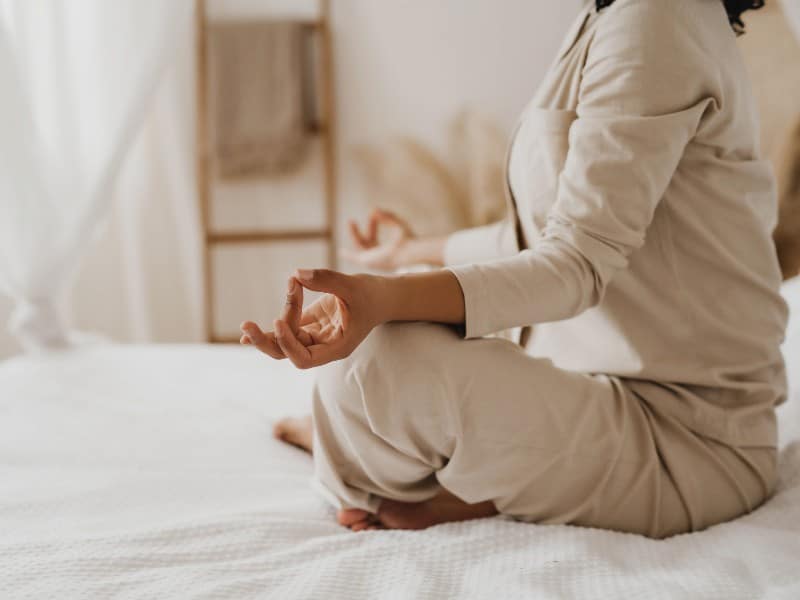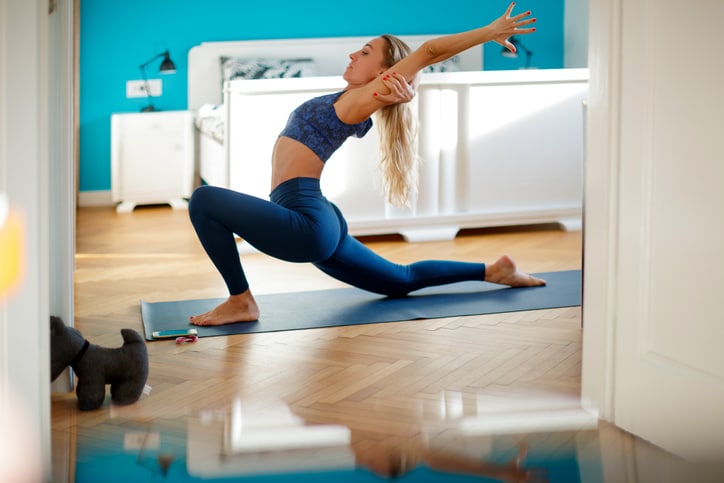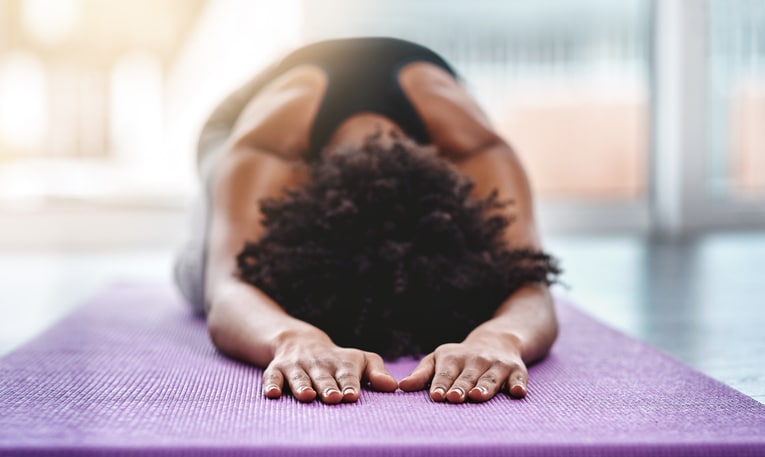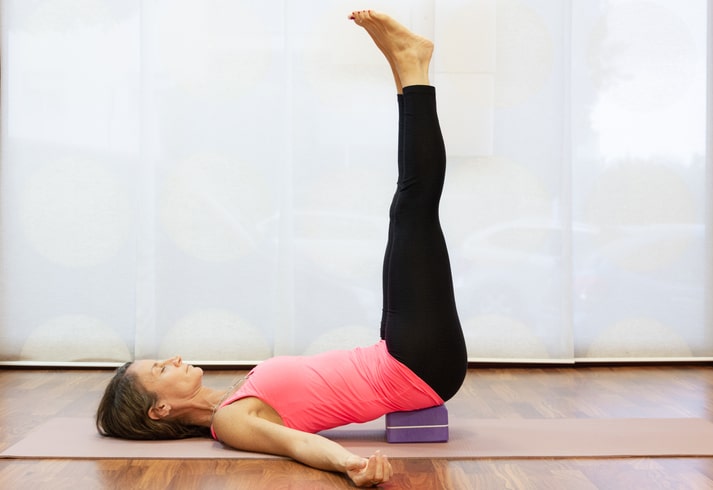Practicing yoga has proven benefits for both mental and physical fitness, but did you know it can be a good way to wake up each morning and wind down at bedtime?
For many households, mornings are as hectic as the day gets, especially on workdays and schooldays. Taking 10 minutes to focus your breathing and get your blood flowing can set the tone for the rest of the day.
“Yoga can help improve feelings of stress, anxiety, and burnout,” says Mariah Burnell, DO, family medicine physician on the medical staff at Methodist Southlake Medical Center. “It’s also a great way to bring more peace into our lives after a long day.”
At bedtime, yoga can help focus the mind and shrug off the day’s anxiety. What’s more, practicing meditation and light exercise before bed can reduce the time it takes to get to sleep and improve the quality of sleep you do get.
So get your yoga mats ready as Dr. Burnell shares four yoga poses to kick-start your day and four more to help you sleep better at night. But first a word of advice:
“I highly recommend incorporating yoga into your weekly routine,” Dr. Burnell says. “But if you have injuries or are concerned about exercising, make sure to consult with your physician first.”
WAKE UP WITH THESE POSES
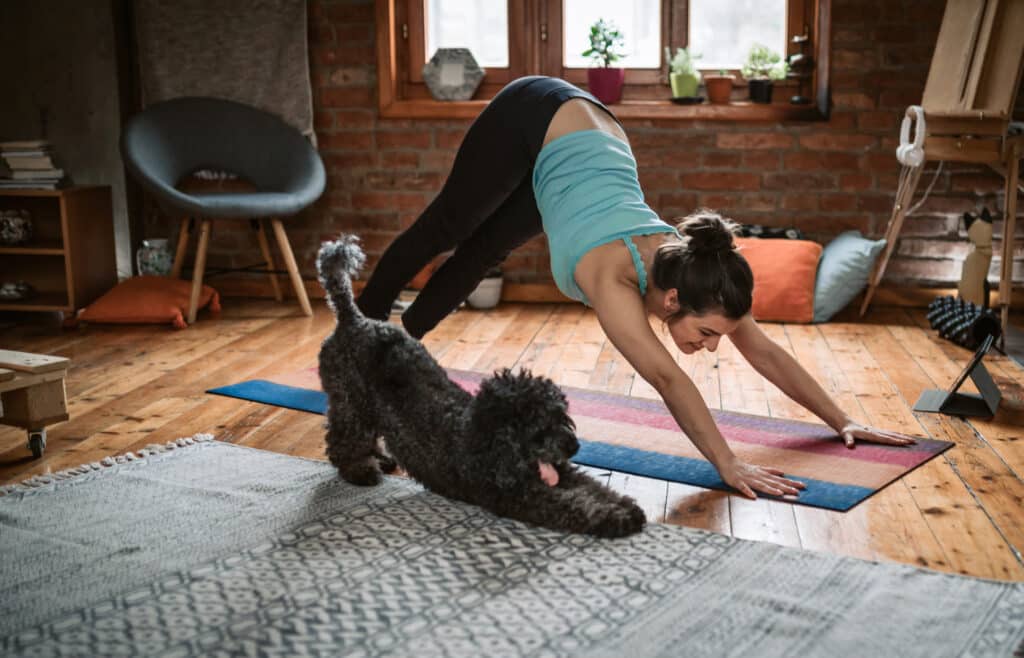
1. Downward dog
Begin this pose by getting down on all fours, into what’s called the tabletop position. Place your hands under your shoulders and your hips directly over your knees. Spread your fingers while gripping the pad, allowing the pressure to come off your wrists and travel into your shoulders.
Now raise your bottom into the air, and push off from your fingertips and toes. While engaging your core, gently allow your head to tuck in toward your chest. Now you are in the downward facing dog position.
Maintain this position, and bend your left knee inward, giving your right leg a nice stretch for 30 seconds. Do the same thing using your left leg. Perform this stretch for at least two minutes.
“A great benefit from this pose is that it helps improve blood circulation,” Dr. Burnell says. “The enhanced blood flow is great for the brain to help you think clearer.”
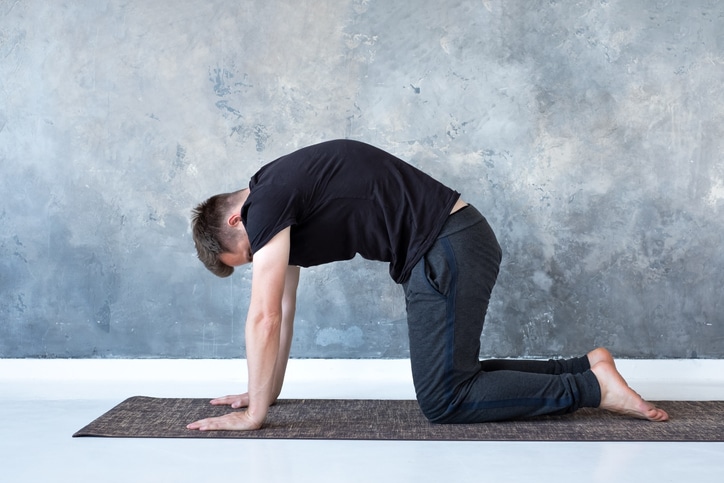
2. Cat cow
Start this combo pose much like you did with the downward dog, aligning your shoulders with your wrists and making sure your hips are over your knees.
But this time, inhale deeply while curving your lower back and gazing upward like a cow mooing at the sun. Exhale deeply and reverse the movement by curving your belly inward and look at your bellybutton. This will make your body transform into a cat pose stretch. Inhale deeply to repeat the process again for two minutes.
“Cat cow is an easy pose that can help power up your brain to improve focus, mental stability, and coordination,” Dr. Burnell says.
3. Low lunge with a dragonfly twist
This pose might seem intimidating, but it sounds harder than it really is. Start by standing with both feet together, then step back with your left foot.
Take a deep breath and twist your torso over the right leg while reaching straight up with your left arm, and straight down with your right arm. Hold this pose for at least five deep breaths, then do the same for the other side.
This posture brings life into your legs, hips, lower back, chest, and shoulders, Dr. Burnell says. It also stretches your calves and hip flexors.
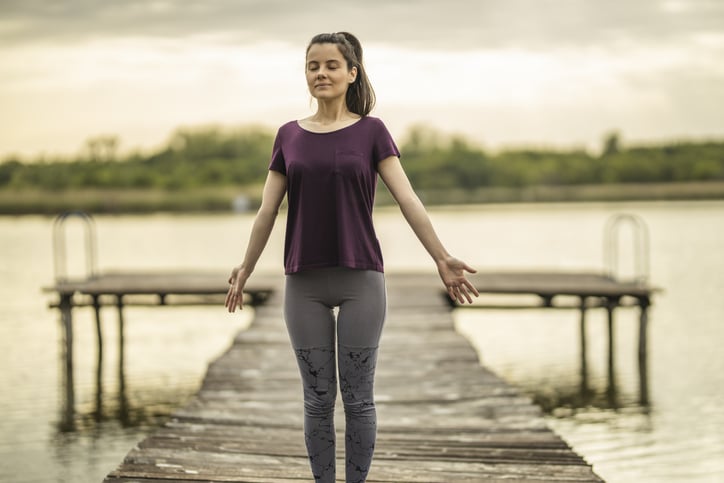
4. Mountain pose
This simple pose is one of the most important because it helps you find your balance and keeps you rooted in the present moment. Start by standing with both of your feet planted on the ground. Roll your shoulders back up then up and down. Breathe in deeply and push it out. Now, turn your palms forward as you breathe in and open your chest.
“Mountain pose helps us gain strength and stability,” Dr. Burnell says. “It also helps you feel present and aware in the moment, a great mind-set to start the day.”
WIND DOWN WITH THESE POSES
5. Extended child’s pose
The child’s pose helps you unwind and relax. Start off by sitting on your knees, with your heels touching your bottom. Lean forward, stretching your arms and reaching your fingertips out as far as they can go. Inhale deeply, slowly exhale, and try to rest your forehead on the mat if you’re able to stretch that far.
“If your forehead can’t reach the mat, you can rest your head on your arms and still receive a relaxing stretch,” Dr. Burnell says. “It’s an intense routine, but it really helps you wind down.”
6. Waterfall
The waterfall is a relaxing pose that relieves stress in the legs and feet. While in this position, focus on your breathing. If you need help with balance, you can use a wall for support. In fact this pose is also called “legs up the wall.”
“This pose increases blood circulation and helps alleviate excess fluid build-up in the legs,” Dr. Burnell says.
To get into this position, start by lying on your back with your knees bent and your feet pressed flat against your mat. Inhale deeply and pretend a string is pulling your belly up into the air. Place a pillow or yoga block under your lower back and rest your weight on it.
Inhale deeply again and raise your left leg straight up into the air. Next, exhale, and raise your right leg.
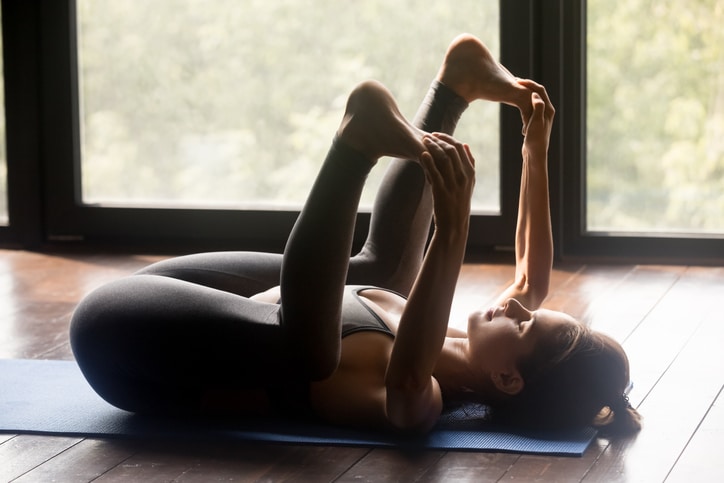
7. Happy baby
Who doesn’t love a happy baby? To achieve this pose, lie flat on your back, inhale, and slowly bring your knees close to your chest. Lift your arms and grab your big toes.
While holding your toes, deepen the stretch by gently opening your hips and widening your legs. Continue to keep your head on the mat, as you gently rock your body from side to side (like a happy baby) for 30 seconds to a minute.
“If you’re looking for a pose to improve your flexibility, then happy baby can help you get there,” Dr. Burnell says. “This pose helps stretch out your back, spine, inner thighs, and groin area.”
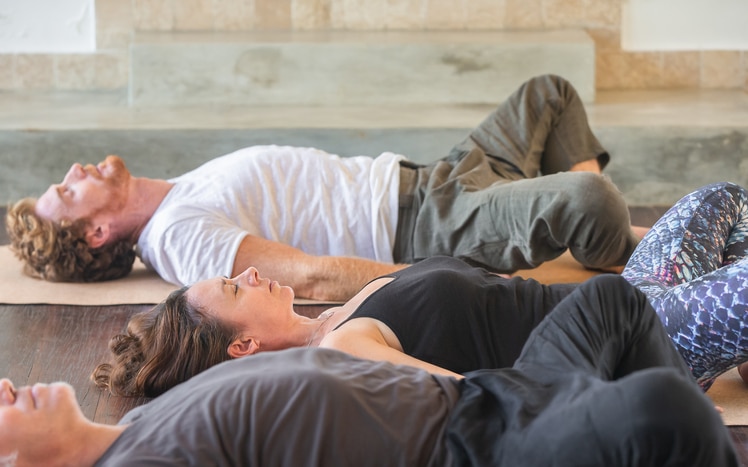
8. Reclining butterfly
Our last pose focuses on stretching out the lower body. Lie on the floor with your knees bent and your palms positioned flat on the mat. Next, put the soles of your feet together, and open your legs like a butterfly. Get your knees as close to the mat as possible to deepen the stretch.
Hold this stretch for five to 10 breaths.
Finally Dr. Burnell notes that the Centers for Disease Control and Prevention recommends 150 minutes of moderate intensity exercise weekly for optimal heart performance and overall health benefits.
“Yoga can certainly count toward this time,” she says. “It’s unique in that it can provide benefit for a variety of health issues, including low back pain, osteoarthritis, and hypertension.”
It’s no wonder yoga can also improve our sleep and start our days off on the right foot.

